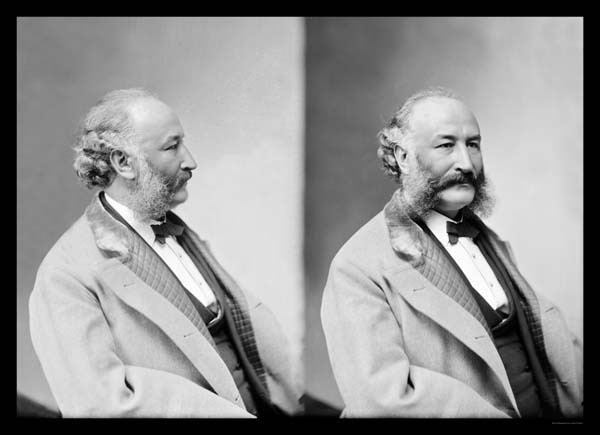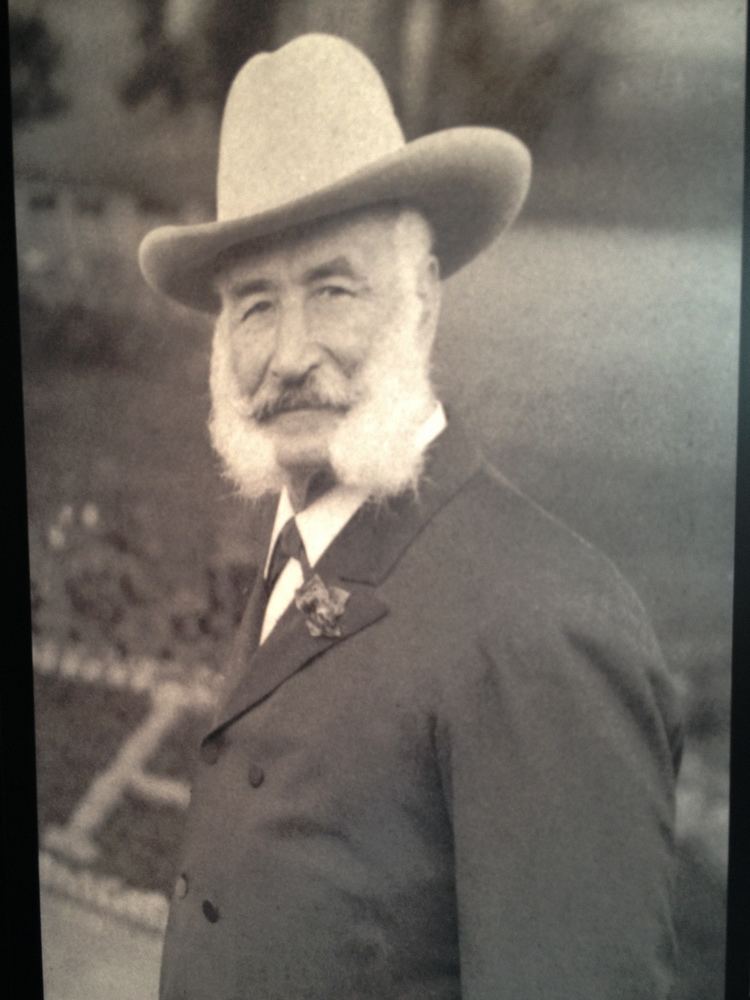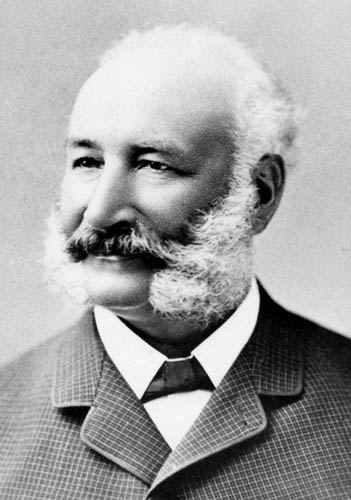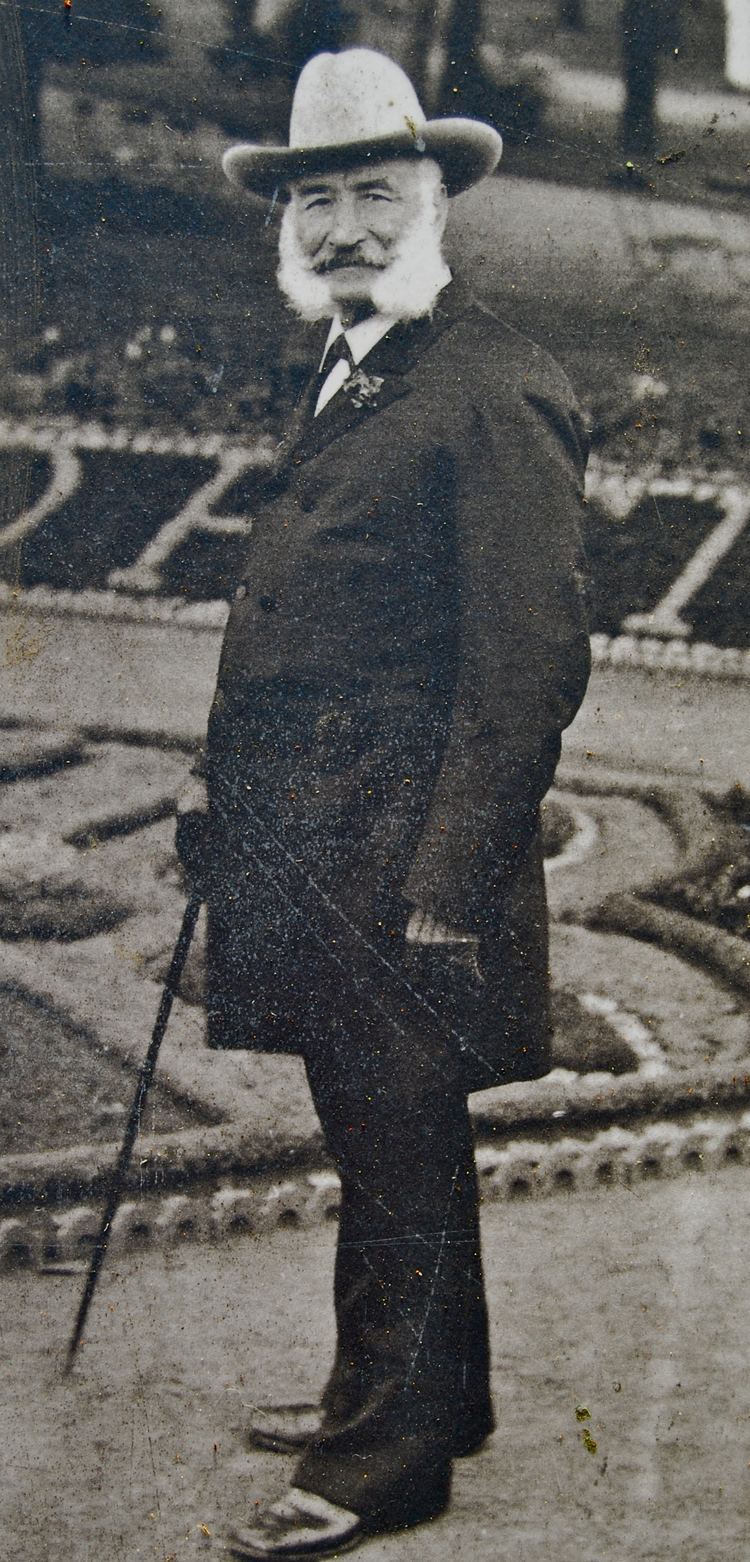Name Adolph Sutro Resigned January 3, 1897 | ||
 | ||
Died August 8, 1898, San Francisco, California, United States Previous office Mayor of San Francisco (1895–1897) Books Documents from the Sutro Collection | ||
The Story of Sutro Baths
Sutro's Legacy
Adolph Heinrich Joseph Sutro (April 29, 1830 – August 8, 1898) was a German-American engineer, politician and philanthropist who served as the 24th mayor of San Francisco from 1895 until 1897. Born a German Jew, he moved to Virginia City, Nevada and made a fortune at the Comstock Lode. He is today perhaps best remembered for the various San Francisco lands and landmarks that still bear his name.
Contents
- The Story of Sutro Baths
- Sutros Legacy
- Sutro Tunnel
- Estate baths and home
- Mayor 18941896
- Family
- References

Sutro Tunnel

Born to a Jewish family in Aachen, Rhine Province, Prussia (today North Rhine-Westphalia, Germany), Sutro, educated as an engineer, arrived in the United States at age 20. In 1860, he introduced himself to William Ralston of the Bank of California and introduced his plans for de-watering and de-gassing the mine shafts of the Comstock Lode by driving a tunnel through Mount Davidson to drain the water. Sutro incorporated the Sutro Tunnel company and raised US$3 million, a considerable fortune through this work in Nevada. He included the miners in his scheme, and planned to sail to Europe to negotiate with the Parisian Bank, but the Franco-Prussian War commenced in the middle of July 1870. Sutro was stymied, but out of the blue came an offer from a London bank led by a banker named McClamont, who offered $750,000 in gold per year for the Comstock.

According to historian Samuel Dickson, "... Sutro set off blasts of dynamite, ... leading the way for tunnel diggers. He fought avalanches, mud slides and poisonous gases. He dug air shafts to relieve the danger; the shafts filled with water, one of them to the depth of nine hundred feet. He fought cave-ins and solid rock. Through the grueling months, day after day and month after month, he marched ahead of his men, stripped to the waist, laboring with them, sweating with them, facing death with them, and in the end, winning through with them to victory."

Adolph Sutro became King of the Comstock because his tunnels drained three to 4 million US gallons (15,000 m3) of water a day, rented by mine owners at an average of $10,000 a day, "all moneys accumulated for his stockholders."

Sutro saw that better German pumps were becoming available, that the Comstock was going even deeper than his drainage tunnel and diminishing in metal output, and sold out before conditions worsened further, departing rich for San Francisco.
Estate, baths, and home

His wealth was increased by large real estate investments in San Francisco, where he became an entrepreneur and public figure after returning from the Comstock in 1879. These land investments included Mount Sutro, Land's End (the area where Lincoln Park and the Cliff House are today), and Mount Davidson, which was called "Blue Mountain" at the time.

Sutro opened his own estate to the public and was heralded as a populist for various astute acts of public munificence, such as opening an aquarium and an elaborate and beautiful, glass-enclosed entertainment complex called Sutro Baths. Though the Baths were not opened until 1896, Sutro had been developing and marketing the project for years, attempting four separate times to insulate the site from waves using sea walls, the first three of which collapsed into the Pacific. In 1896, Adolph Sutro built a new Cliff House, a seven story Victorian Chateau, called by some "the Gingerbread Palace," below his estate on the bluffs of Sutro Heights. This was the same year work began on the famous Sutro Baths, which included six of the largest indoor swimming pools north of the Restaurant that included a museum, skating rink and other pleasure grounds. Great throngs of San Franciscans arrived on steam trains, bicycles, carts and horse wagons on Sunday excursions. In 1894, Sutro, in preparation for the opening of the Cliff House, bought a large part of the collection of Woodward's Gardens, a combination zoo, amusement park, aquarium, and art gallery which had closed in 1891.
The Baths were saltwater and springwater pools, heated to varying degrees, and surrounded by a concert hall and museums stocked with treasures that Sutro had collected in his travels and from Woodward's Gardens. The baths became very popular despite their remote location, across the open dunes to the west of the populated areas of the city. This popularity was partly due to the low entry fee for visiting the Baths and riding the excursion railroad he built to reach them. The railroad grade still exists as a walking trail along the Land's End cliffs, maintained by the Golden Gate National Recreation Area.
Sutro managed a great increase in the value of his outlying land investments as a direct result of the development burst that his vacationers' railroad spawned. He also increased the value of his lands by planting his property at Mount Sutro with saplings of fast-growing eucalyptus. This occurred at the same time as city Supervisors granted tax-free status to "forested" lands within city limits. Small fragments of the forest still exist. The largest is at Mount Sutro, where 61 acres (250,000 m2) are the property of the University of California, San Francisco, and another 19 are property of the City of San Francisco.
Mayor (1894–1896)
Sutro's reputation as a provider of diversions and culture for the average person led the politically weak and radical Populist Party to draft him to run for mayor on their ticket. He won on an anti-big business platform, inveighing against the tight grip that the Southern Pacific Railroad had over local businesses. Nevertheless, he was quickly considered a failed mayor, ill suited for political work, and did not provide the popularity boost his party had hoped to achieve by association with him.
At the time of his death, in 1898, his fortune was extensive and his legal affairs in disarray. As a result, his heirs fought bitterly over his holdings.
Many of Sutro's gifts to the city of San Francisco still exist and bear his name, such as Mount Sutro, originally Mount Parnassus (a lower hill nearby is the location of the Sutro Tower), and Sutro Heights. Sutro Baths became a skating rink and then was destroyed by a fire in 1966. The ruins of the baths (mostly the cement foundations) are just north of the Cliff House. They are part of the Golden Gate National Recreation Area. (1894-1896)
Family
His brother was Otto Sutro, an organist, conductor and minor composer who was very prominent in musical life in Baltimore, Maryland.
His nieces (Otto's daughters) were Rose and Ottilie Sutro, the first recognised piano-duo team.
